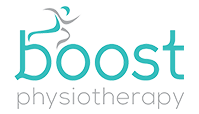
Empowering Wellness: Managing Arthritis and Osteoporosis with Physiotherapy
Arthritis and osteoporosis, two prevalent musculoskeletal conditions, hold the potential to significantly impact an individual’s overall well-being. Arthritis, marked by joint inflammation, and osteoporosis, a condition causing bone fragility, collectively affect millions of people worldwide. This blog post delves into the interconnection between these conditions and explores how physiotherapy serves as a vital tool for symptom management and the enhancement of one’s quality of life.
Understanding Arthritis and Osteoporosis
Arthritis
Arthritis is a broad term that encompasses various joint-related disorders. It occurs due to factors such as an overactive immune system, infections, prior fractures or injuries, or genetics.. Inflammation is a common feature of arthritis, which can lead to pain, stiffness, and reduced joint mobility. Certain types of arthritis can increase the risk of developing osteoporosis due to shared risk factors and the inflammatory component.
The 2 most common forms of arthritis are:
- Osteoarthritis – This is the most common type of arthritis. It is a chronic disease of the joints, especially the weight-bearing joints of the knee, hip, and spine. It destroys the coating on the ends of bones (cartilage) and narrows the joint space. It can also cause bone overgrowth, bone spurs, and reduced function. It occurs in most people as they age. It may also occur in young people because of an injury or overuse. Commonly caused by wear and tear of the joint over time or because of overuse.
- Rheumatoid arthritis – This is an inflammatory disease of the joint linings. The inflammation may affect all of the joints. It can also affect organs such as the heart or lungs.This is caused by the body’s immune system attacking the body’s own tissues.
MANAGING ARTHRITIS THROUGH PHYSIOTHERAPY
Physiotherapy can be a valuable ally in managing arthritis symptoms. Here’s how it can help:
- Exercise: Regular exercise is crucial for maintaining joint flexibility and reducing stiffness. Physiotherapists can design customized exercise programs to improve range of motion and strengthen the muscles around affected joints. Low-impact activities like swimming and water aerobics are particularly beneficial as they reduce stress on weight-bearing joints.
- Assistive Devices: Physiotherapists can recommend and educate you on the use of assistive devices such as canes, shoe inserts, walkers, or raised toilet seats to protect joints and improve daily functioning.
- Manual Therapy: Hands on physiotherapy treatment to target joints that have limited mobility as well as muscles that may have become tight or weak can substantially decrease a person’s pain and increase mobility to allow for better, pain-free movement.
- Pain Relief Techniques: Techniques like acupuncture, massage, and transcutaneous electrical nerve stimulation (TENS) can help alleviate arthritis-related pain and discomfort.
Osteoporosis
Osteoporosis is a condition characterized by weakened and brittle bones. It occurs when the density and quality of the bone are reduced, making them more susceptible to fractures. Osteoporosis can result from various factors, including aging, hormonal changes, inadequate nutrition, and a sedentary lifestyle. Furthermore, inflammation, which is often seen in arthritis, can accelerate bone breakdown. Smoking, obesity, type 2 diabetes, and physical inactivity are additional risk factors that connect these two conditions.
Managing Osteoporosis:
While medication is a standard treatment for osteoporosis, there are other ways to help prevent fractures and enhance overall bone health:
- Exercise: Weight-bearing exercises and activities that improve balance and posture can strengthen bones and reduce the risk of fractures. Physiotherapists can recommend safe and effective exercise regimens tailored to your condition.
- Nutrition: A balanced diet rich in calcium and vitamin D is essential for maintaining proper bone density. Physiotherapists can offer dietary guidance to support bone health.
- Stop Smoking: Quitting smoking is highly recommended for bone health, as smoking accelerates bone loss.
- Limiting Alcohol Consumption: Moderating alcohol intake is important, as excessive alcohol consumption increases the risk of fractures.
- Fall Prevention: Physiotherapists can assess and address fall risk factors, helping you avoid accidents that could lead to fractures.
Understanding the Role of Physical Therapy
Physical therapy is a cornerstone of the comprehensive treatment approach for arthritis and osteoporosis. It aims to reduce pain, improve joint mobility, enhance muscle strength, and increase overall functionality. By working with a skilled physiotherapist, individuals with these conditions can regain control over their bodies and lead more active lives.
The Four Key Types of Exercises for Arthritis and Osteoporosis:
- Aerobic Exercises: designed to increase your heart rate, boost cardiovascular health, and maintain general fitness levels.
- Benefits for Arthritis: Aerobic exercises can improve joint mobility and reduce stiffness.
- Benefits for Osteoporosis: Weight-bearing aerobic exercises, such as brisk walking or dancing, help in building and maintaining bone density.
- Flexibility Exercises: involve gentle stretching of the joints and muscles to gradually reduce stiffness and improve range of motion.
- Benefits for Arthritis: These exercises can alleviate joint discomfort, enhance flexibility, and make daily activities more manageable.
- Benefits for Osteoporosis: Improved flexibility can reduce the risk of falls and fractures by enhancing balance and coordination.
- Balance Exercises: also known as coordination exercises, are crucial for preventing falls, trips, and slips by improving overall balance.
- Benefits for Arthritis: Enhanced balance reduces the risk of injury and improves confidence in daily activities.
- Benefits for Osteoporosis: Reducing the risk of falls is paramount for individuals with osteoporosis, as fractures can have severe consequences. Balance exercises help mitigate this risk.
- Strengthening Exercises: involve a mix of low-impact and weightlifting exercises to significantly reduce the risk of bone fractures.
- Benefits for Arthritis: Strong muscles provide support to the joints, helping to reduce pain and improve stability.
- Benefits for Osteoporosis: Strengthening exercises not only increase muscle strength but also enhance bone density, making them less prone to fractures.
In conclusion, arthritis and osteoporosis are conditions that can significantly impact your daily life, but they are not insurmountable. With the help of our Edmonton Physiotherapists, you can manage symptoms, improve mobility, and reduce the risk of complications. Whether you’re dealing with arthritis-related joint pain or osteoporosis-related bone health concerns, consulting a physiotherapist can be a crucial step toward a more comfortable and active life. Remember that early intervention and a proactive approach can make a significant difference in managing these conditions effectively. If you have any concerns or questions, feel free to reach out to any of our clinics!
All of our locations have physiotherapists who are highly skilled at managing arthritis and osteoarthritis. Book at any of our locations to start your physiotherapy treatment today! Call us to schedule your physiotherapy appointment at 587-635-5555 (South Edmonton Physiotherapy Clinic), 780-591-5555 (Stony Plain Physiotherapy Clinic) or 780-540-9678 (Meadows Physiotherapy Clinic).
BY: gcowan
Uncategorized
COMMENTS: No Comments
